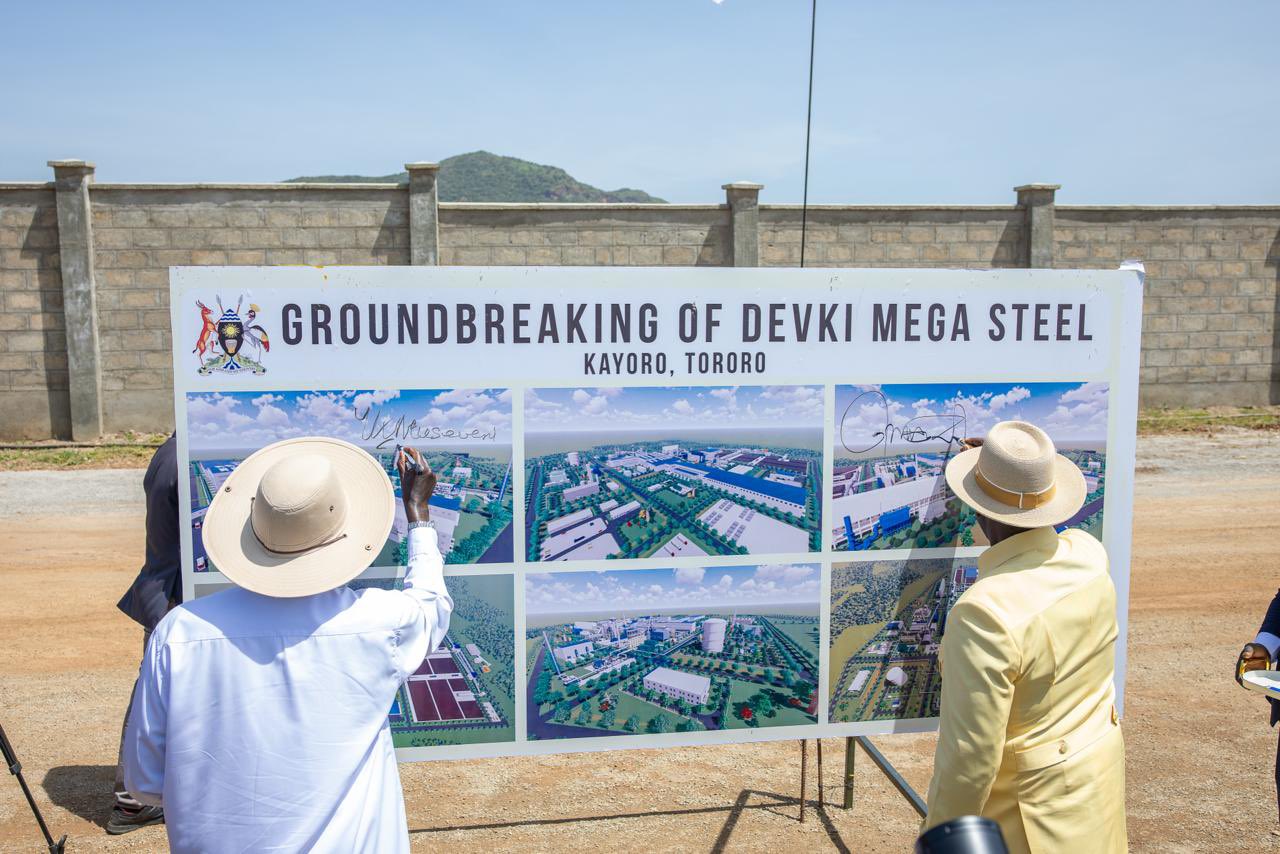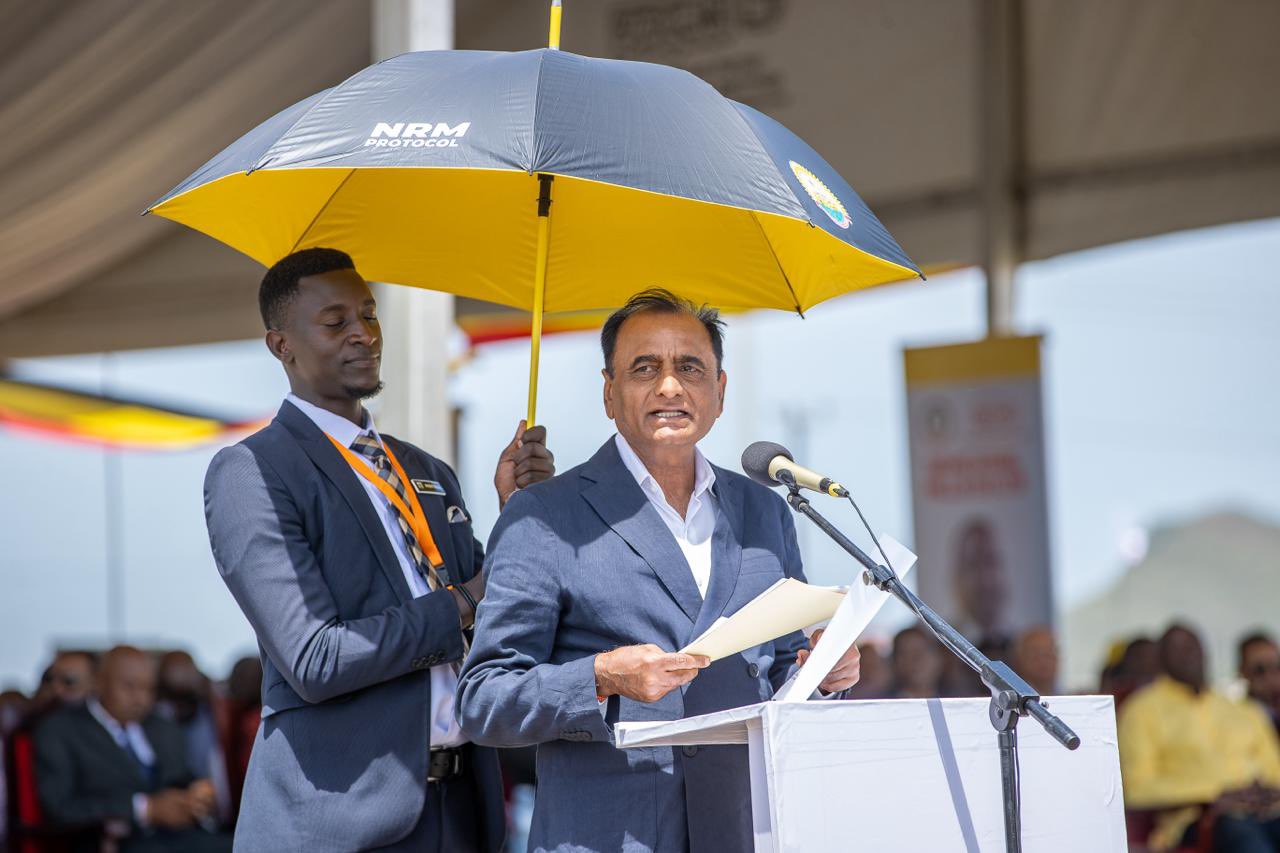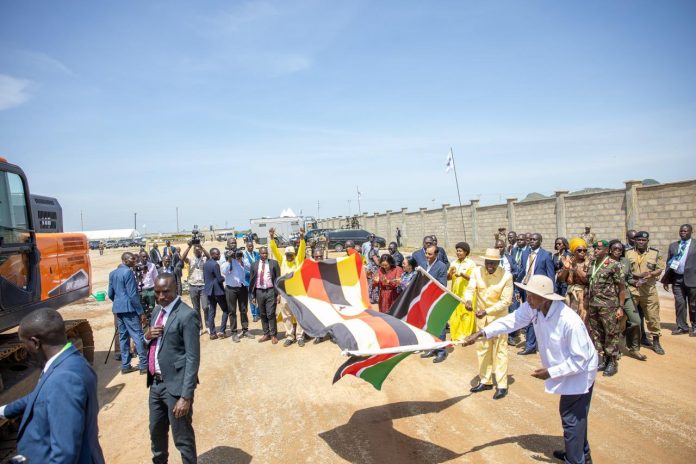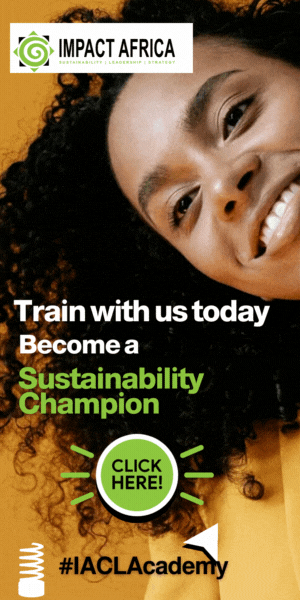Kenya’s Devki Group broke ground on a US$500 million steel plant in Tororo, Uganda, on November 23, 2025, with Presidents Yoweri Museveni of Uganda, William Ruto of Kenya and Paul Kagame of Rwanda attending the ceremony. The project, announced as a one-million-tonne annual steel mill that will use blast-furnace technology and create around 15,000 direct jobs in mining, transport and manufacturing, is billed by its backers as a bid to turn Uganda from an importer of construction materials into a regional producer and exporter. The company says construction will conclude in two years and the first steel will roll out by the end of 2027.

The scale of the Tororo investment is immediately legible in numbers: one million tones a year would place the plant among the largest in East and Central Africa and, by Devki’s account, enough to meet much of regional demand. For Uganda it promises to substitute imports that have long drained foreign currency and to feed a local value chain stretching from iron-ore extraction through transport logistics to finished construction products. The plant’s chairman, Narendra Raval, told reporters the decision to locate in Uganda was driven by accessible iron-ore deposits and predictable tax terms; national officials say the project will lift export potential while supplying local industry.
The headline figures, capacity and jobs, mask technical and commercial challenges that will determine whether the promise becomes routine supply. Blast-furnace steelmaking is capital-intensive, reliant on steady ore quality, uninterrupted power and affordable transport to reach markets. Devki’s argument is that long-term savings from local raw materials and proximity to East African markets will outweigh initial costs.
The company’s record in the region shows a playbook that combines manufacturing scale with vertical integration: Devki already operates cement and steel businesses in Kenya and Uganda and recently completed a US$85 million acquisition of Rwanda’s CIMERWA, a move it says will push Rwanda toward cement self-sufficiency. That buyout, confirmed in 2024, expands the group’s footprint and its claim to be building regional supply chains.
Those supply-chain links are already visible in Uganda’s cement story. The arrival of Simba Cement, a Devki unit in the country, shifted local dynamics by increasing capacity and pressuring retail prices. Competition from newer, regional plants has, in past years, brought the price of a 50kg bag of cement down from well above USh39,000 to levels closer to USh28,000–USh31,000 in certain markets; that price change loosened constraints on small builders and developers and helped spark a wave of local construction activity.
At the macro level Uganda’s cement export earnings have also grown: official and press reporting put cement export receipts in recent reporting periods in the tens of millions of dollars (around US$85 million reported as cement earnings to December 2024), evidence that domestic production is beginning to serve neighboring markets.
Read also: TotalEnergies and DelAgua drive 200,000 cookstove rollout across rural Rwanda
Devki frames these investments as more than business expansion. The company points to social programmes, school feeding schemes and local community projects, as part of a model in which rural-sited factories become engines of local development. Devki’s publicly available statements and media coverage cite long-running feeding programmes that reach thousands of children in Kenya and community investments around CIMERWA in Rwanda that include a school, a clinic and vocational facilities.
The group also highlights industrial decarbonization steps: its Ruiru steel complex hosts a rooftop solar installation intended to cut electricity costs and emissions, a modest but telling example of how manufacturers are combining energy-security measures with cost control.
If the Tororo mill’s local case is about inputs, jobs and social investment, its regional case is about balance of payments and industrial policy. Uganda has historically imported large volumes of steel and cement; converting those import bills into local output keeps value on the continent, offers a cushion against currency shocks and creates raw material linkages for construction and manufacturing.
At the same time the shift raises questions about competition, procurement and the ability of neighboring countries to benefit from new supply hubs. A plant that cuts regional prices could be a boon for African urbanization and infrastructure projects, but it will also pressure smaller, less-efficient producers and obliges governments to manage trade flows and tax regimes carefully. The presence of three heads of state at the Tororo ceremony signaled political acceptance at the highest level, but translating political theatre into durable cross-border industrial integration will demand clear regulatory alignment and logistics investment.

The numbers Devki cites, one million tonnes of steel annually, 15,000 jobs, and USh2 trillion in prospective annual steel exports for Uganda, are a useful way to test the plan against regional needs. East Africa’s infrastructure pipeline and urban housing demand are large and growing; yet industrial projects of this magnitude require stable electricity, competitive freight corridors and access to a skilled workforce.
Devki’s existing strategy; sit factories in rural areas to supply jobs to local communities and to reinvest profits in social programmes, lowers some social resistance but leaves technical hurdles open. Power stability is one such hurdle: while rooftop solar and captive generation reduce exposure to grid outages, they do not replace the continuous, high-capacity energy that a blast furnace demands. Transport remains another: ore and finished products must move efficiently to ports and urban centers, which in many corridors still suffer from congestion, limited rail capacity and costly road haulage.
Read also: EU commits €7 billion to accelerate Africa’s renewable energy transition
The regional ripple effects are concrete. Developers in Uganda and neighboring markets may see lower steel and cement prices within a few years, making public and private housing, hospitals and schools marginally cheaper to build. Local employment and upstream services, from truckers and mechanics to small-scale miners and spare-parts suppliers, will expand.
At the ground breaking ceremony, both President Yoweri Museveni and Devki Group chairman Narendra Raval underscored that the Tororo project would be built with the community at its center. They committed that at least 90 percent of the workforce would be drawn from local residents in Tororo and neighboring areas, ensuring that jobs move directly to the households closest to the plant. Museveni said industrial projects only make sense when communities benefit first, and Raval reaffirmed that the company will prioritize hiring, training and integrating workers from the surrounding villages into every stage of the operation.
Engage with us on LinkedIn: Africa Sustainability Matters






